How I got into Graduate School
Published:
How I got into MIT

In this blog, I would be describing my journey during the application process for graduate schools. This journey ranged from listening to Eye of the Tiger by Survivor while preparing the application to listening Lose Yourself by Eminem during the application submissions to listening Don’t You Worry Child by Swedish House Mafia when the rejection letters came in, until I received the acceptance letter from Massachusetts Institute of Technology.
Why this blog?
I got admitted into a Masters program at MIT in the AeroAstro Department (which I would try to get it converted to a PhD). My research interests include control and autonomy with a special focus on reinforcement learning. Along my journey, I have been helped by awesome mentors (seniors from my college, my research advisor, internship guides, professors and my family) and the only reason I got into this coveted university was because of their generosity in taking out time to help me with the applications. That is why I am writing this blog because I feel that this can help juniors who are thinking about applying.
Q: ‘But there are a lot of blogs and guides which do the same thing. Then why do we need your blog?’.
A: I have tried to not repeat the content from those blogs and instead tried to point out the minor details in the application process and the mistakes I made during the process.
An important disclaimer: Please take the advice with a pinch of salt (especially the GRE stuff!) as I did stuff which fit me the best and may not fit you well. So if you feel that something is inapplicable, then trust yourself and see what’s best for you. Also, this is going to be a pretty long post.
A gist of the application process:
For those who do not have enough time to read:
- Choose labs way before the application process starts. Search for labs in departments which are even slightly related to your field.
- Read papers published by those labs and contact them in case you have any doubts or ideas to extend their paper.
- Give GRE and TOEFL in August or September for Fall applications as most of the deadlines for applications are in December.
- Ask your academic advisors, internship guides or professors if they are willing to give strong letters of recommendations.
- Start with the statement of purpose as early as possible. Read the prompt for the essay. Every school (in some cases even departments) have different prompts asking you to answer different questions in the essay.
- Get the essays proofread by seniors, academic advisors (only if they are free!) and family members.
- Get the transcripts and other miscellaneous materials ready. Some universities ask you to mail a sealed physical (along with electronic copy) of your transcripts.
- Fill the application form, pay the application fees and submit the application.
- Wait!
My background
First of all I would like to give some background on my application profile. I changed my major from aerospace engineering to electrical engineering after my first semester at Indian Institute of Technology Madras. Yes, I applied back in Aero after changing to Electrical! I’ll explain the reason for this later in this post.
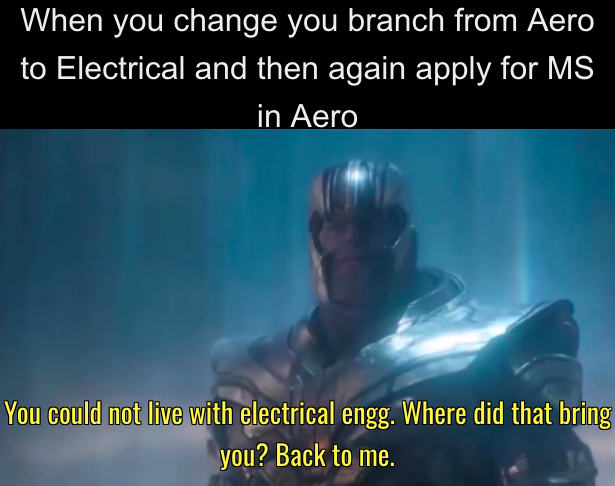
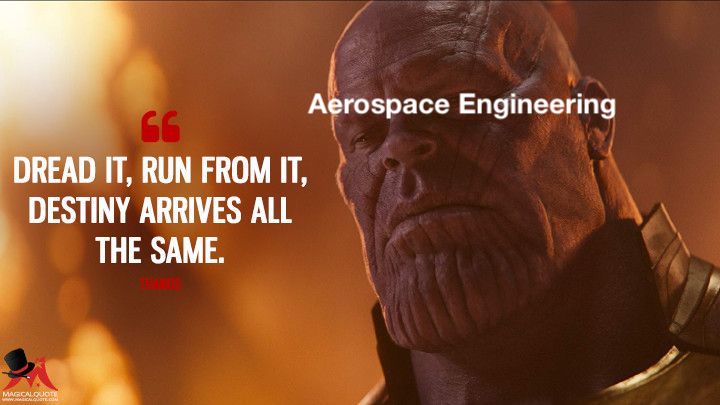
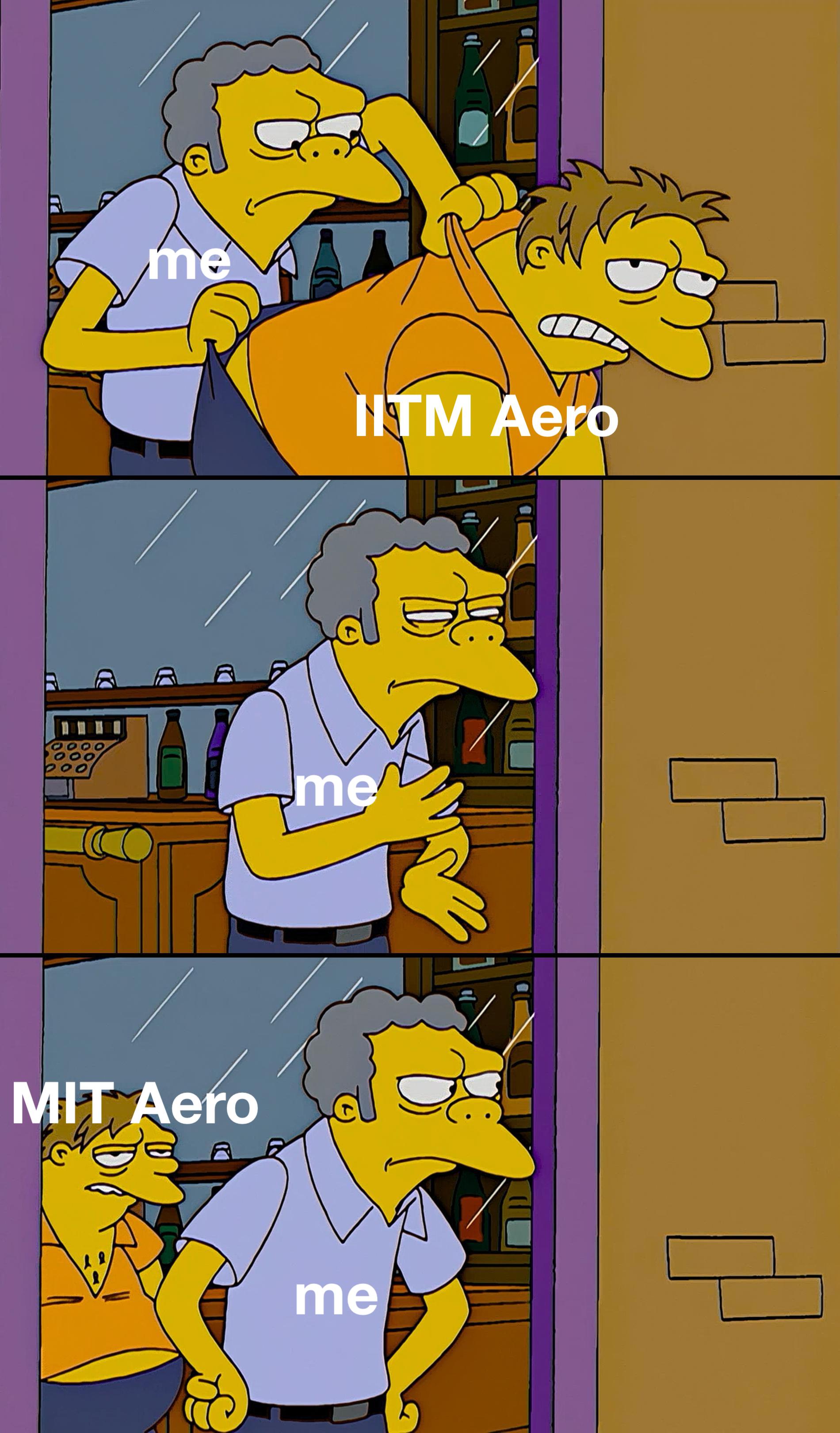
This change from Aero to Electrical Dept. allowed me to take up a lot of free electives as the curriculum of Electrical Engineering at IIT Madras was quite flexible allowing as much as 50% of the total credits to be taken as electives. This freedom of choosing electives allowed me to take up a variety of courses and explore a plethora of topics ranging from Robotics to Neuroscience. With this, I got to know what I was interested in and what I should definitely avoid (Solid State Devices :P). In the end, I stuck with control, autonomy and robotics and decided to pursue them as fields of interest for my graduate studies. So if you stumble upon this blog quite early in your undergraduate studies, then I would definitely recommend you to explore the different fields of engineering as early as possible.
I interned at Daimler AG, Germany after my second year on finding optimal camera parameters for improving object detection performance in pre-trained networks.
After coming back, I extended my internship project by working with Prof. Balaraman Ravindran on using reinforcement learning for choosing optimal digital transformation in images to improve object detection performance. This work led to a research manuscript which was under review at a conference during my applications.
I interned at TCS Research and Innovation Lab, Mumbai after my third year where I worked on using reinforcement learning to solve the online version of the 3D bin-packing problem (kind of similar to 3D Tetris). This work led to a research paper which was under review during my applications (paper).
Along with this I had worked on “Hand Gesture Recognition for Soldiers” and Automatic Waste Segregation Dustbin.
If you want to see my CV feel free to email me. The LaTex template I used for my CV can be found here
The GPA conundrum
I had a CGPA of 8.87/10 while applying. Although my CGPA was not above the “propitious” 9.00 mark which a lot my seniors had advised me, I had taken several graduate-level courses which involved working on research projects as a part of the course evaluation. My performance in these courses was much better than in the undergraduate core courses which involved just exams for course evaluation. Do not take my GPA as an exemplar for not having a very high GPA. It is always advantageous to have your GPA as high as possible. Also, the admissions committee always looks for people who can conduct research and I think my projects and my letters of recommendations had a bigger role in getting me the admit rather than the GPA. (I am characterising my GPA as not high because I had a friend who was applying with a GPA of 9.99!)
Also, if you do not have a very high GPA, do not let it stop you from applying to schools you want to get in. I feel that once you are above a particular value (this value depends on the school), it is just your research experience which determines your fate. Also if you feel that your GPA is low then you should put in more efforts in your Statement of Purpose to let them know that you belong there.
The colleges I applied:
| College | Department | Program |
|---|---|---|
| Massachusetts Institute of Technology | AeroAstro | MS* |
| Carnegie Mellon University | Robotics | MS+PhD |
| University of California Berkeley | Mechanical Engineering | PhD |
| University of Pennsylvania | Electrical Systems Engineering | PhD |
| Stanford University | AeroAstro | MS* |
| Georgia Institute of Technology | Robotics | PhD |
| University of Southern California | Computer Science | PhD |
*-direct PhD is not available for students with only a Bachelors Degree. Have to convert to PhD after finishing MS
+-can apply to more than one program (MS and PhD in my case) with some extra fees
After all the applications were submitted, my friends told me that the number of colleges I applied to is quite less and the list does not have any “safe school” which was actually true. Because I was applying in a diverse set of departments, I had to find relevant labs, go through their research as well as read the papers published by them. This took up a lot of time and thus I could not go through the labs in other colleges. Although, I wouldn’t recommend not applying to safe schools as this just makes you anxious once your friends start getting admits and you do not hear back from any.
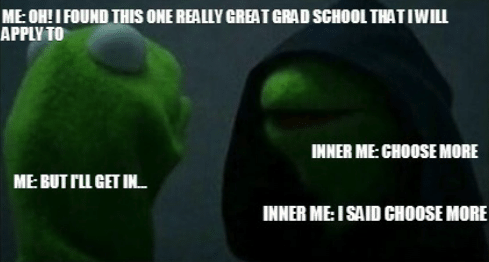
Importance of choice of labs
Choosing labs was the first step in my application process. During my third year, while applying for research internships, I stumbled upon the lab webpage of Aerospace Controls Lab in the AeroAstro Department at MIT. This lab had projects involving reinforcement learning and robotics. This made me realise that there are a lot of labs which work on robotics and are affiliated to departments other than EECS (Electrical Engineering and Computer Science). As I was getting rejected from different research internship programs, I decided that I would mail professors asking them for a research internship. During this phase, I looked up for professors and labs which worked in any area related to my interests. I tried to read their papers and then mail them stating my interest in an internship as well as possible ideas to work on during the internship. Even after doing this, I failed to secure an internship due to various reasons like insufficient funds with the professors for interns, my summer vacations not aligning with their institute’s vacation, etc. Although this strategy didn’t secure me an internship, the upside of this was that I knew which institutes as well as professors to apply in for grad school.
It is quite obvious from my choice of labs that I did not limit myself to the EECS department while applying even though my research interests are quite ‘EECS’ in nature. Another reason, although not a major one, for staying away from EECS departments as much as possible was that the number of applicants in the EECS is much more than other departments and hence the competition is that much higher to get in. A lot of students, especially in India run behind EECS degrees as it provides with high paying jobs and hence a lot of the applicants would be prejudiced towards applying in other departments even if they carry out research in almost similar topics. And from what I heard from my professors and internship guides, most of the universities do not mention the department name on your PhD degrees so I thought it is pointless to have this bias towards EECS departments. Also in a lot of universities professors have dual appointments, so they can take in students from all the departments they are affiliated with. Another important thing to note is that most universities have inter-departmental collaboration so you can actually work on AI even if you are in the Bioengineering department. In my case, along with EECS, departments like MechE and AeroAstro also work on robotics and control with AI (Reinforcement Learning). So if your research interests are quite interdisciplinary like robotics or have a wide range of applications like AI then I would definitely recommend you to search for labs in other departments as well.
You could also ask your recommenders for suggestions on places to apply as they can judge your application and let you know where you would fit quite well. Also, if you apply at places where your recommenders know the faculty members well then it can increase your chances of getting in considerably.
Another factor people take into account while choosing programs to apply is the place/city it is in. You will probably be spending 5 years of your early 20s at that place. Some people choose by weather and some by the proximity of the university to major cities and tech innovation hubs like Silicon Valley, Kendall Square, etc. I did not take this factor much into consideration as I was happy with most of the cities in which the universities I was applying to, were in.
Also, apply ONLY to those universities where you would be happy to go if admitted. I know a few people who applied to places where they did not want to go after getting the admit. You would be just wasting your money and more importantly time in preparing the application.
Importance of Internships
During my third year, I was looking for research internships in universities in the EU and US. I had this opinion that I needed a foreign internship to get a admit in a reputed university. When I failed to get a so-called “revered foreign internship” I decided to convert to the inter disciplinary dual-degree program in robotics offered at IITM so that I could apply for a foreign internship during my fourth year to increase my chances of getting an MS/PhD admit. I was without an internship offer till March (2 months before summer) which prompted me to take this decision. Luckily my research advisor set up an internship for me at TCS Research in Mumbai as I was not allowed to stay back in the institute for research during the summer due to the drought in Chennai at that time. This internship helped me a lot in understanding the research methods and luckily resulted in a research manuscript which was under review during the application submission period. After my internship, I felt confident about my profile and hence reverted back the bachelor’s degree from the dual degree. In hindsight, I feel that converting to the dual degree just for the sake of improving my application profile and not for gaining more knowledge was one of the stupidest decisions in my life :P My advice to anyone in their pre-final year is that a foreign internship is not as important as you think it is. Yes, you do get to know more about the work culture in a different country and the exposure helps, but nothing is more important than your research. The project you work on during the internship, the new things you learn and the connections you make during the internship is more important and that is what will impress the universities.
GRE and TOEFL
I felt that GRE and TOEFL were not that important. Generally, they expect STEM applicants to have a good quant score. To be honest, I prepared for GRE for only 2 weeks. But, I was going through the Magoosh Vocabulary flashcard app during my free time to prepare for the verbal part. In hindsight, I feel that I made a mistake by choosing the exam dates in October, which apparently is quite late. If you want to take the test again, ETS (the company which conducts the exam) restricts you to take the exam once in 21 days. So I should have taken it much earlier. Other than that, I do not have any regrets from the exam in which I got a score of 320 (168Q; 152V; 5AW) which was much lesser than my friends but was good enough to apply at the universities I intended to. Yes, I was bad in the verbal section but I made it up in TOEFL with a score of 108/120. For TOEFL, I prepared only for one day (the day before the exam) to get accustomed to the exam pattern. For me, the most difficult part was the speaking section as they expect us to speak in front of a blank screen with a given time limit of 15-20 seconds. My only goal for TOEFL was to score above 100 because some universities I was applying to, had a hard-cutoff of 100 mentioned on their website. I feel that if you have done most of your education where the medium of instruction was English, then scoring above 100 is quite easy!
ETS will allow you to send the scores for free (included in the exam fees) to four universities. For GRE, you get to choose these four universities just after the exam and for TOEFL, you can fill in and change your choices till one day before your exam. So you should at least be sure of your top-4 places to apply by the time you take the exam. If you want to send your scores to more universities, you will have to shell out some money for both GRE and TOEFL. Some universities do not even ask for the scores for example MIT EECS doesn’t ask for GRE scores but MIT AeroAstro requires it. So please be sure about the GRE and TOEFL requirements for particular universities and departments. If you want resources for the GRE, feel free to email me and I can send them.
Update: Due to the COVID-19 pandemic, many universities are waiving off the GRE score requirements. MIT AeroAstro has waived it off. Please check if the universities you are applying to require the GRE.
Statement of Purpose
Some say that it does not add value to the application while some disagree with this. I feel that the statement of purpose is quite important in the application. This is the place where you let them know the reasons why you think they should take you in. You have to tell them how you would benefit from their program and how you can contribute to their department through research. This is the place where you explain the chinks in your armour like a low GPA, or a gap year. Also, they should be genuine reasons and you should not get obsessed on explaining them in great detail and spend half a page on it.
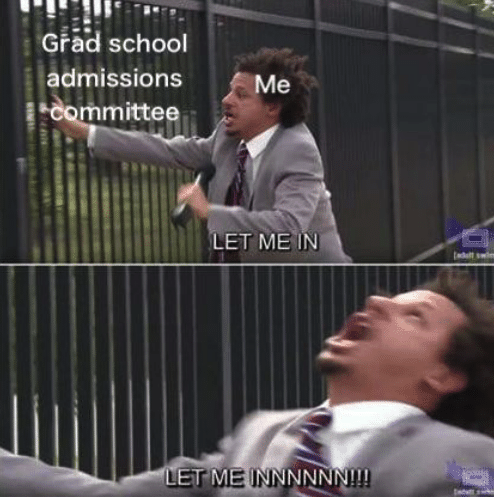
While some applications do not require SoPs per se as they ask you to answer a few questions with a word limit.
The SoP prompt for the AeroAstro application at MIT:
Please give your reasons for wishing to do graduate work in the field you have chosen. Prepare your statement of objectives and goals in whatever form clearly presents your views. Include as far as you can, your particular interests, be they experimental, theoretical, or issue oriented, and show how your background and MIT’s programs support these interests. The statement could be much like a proposal for graduate studies, in the more specific context of your professional objectives. You should set forth the issues and problems you wish to address. Explain your long-term professional goals. The Admissions Committee will welcome any factors you wish to bring to its attention concerning your academic and work experience to date. In this prompt they specifically ask us to tell them our statement of objectives: what we wish to achieve there during the graduate program, the problems you want to solve and how MIT can help you in pursuing your research interests.
The SoP prompt for the Robotics application at CMU:
Prepare a concise one or two page essay in PDF format that describes your primary areas of interest, your related experiences, and your objective in pursuing a graduate degree at Carnegie Mellon. Your essay should be specific in describing your interests and motivations. When describing your interests, you should explain why you think they are important areas of study and why you are particularly well-suited to pursue them. You should describe any relevant education, research, commercial, government, or teaching experience. Here, the prompt focusses on describing our interests and explaining why they are important areas of research and why we are well-suited to pursue them.
The SoP prompt for the MechE application at UCB:
Please describe your aptitude and motivation for graduate study in your area of specialization, including your preparation for this field of study, your academic plans or research interests, and your future career goals. Please be specific about why UC Berkeley would be a good intellectual fit for you.
The SoP prompt for the AeroAstro application at Stanford:
Your statement of purpose should identify personal and professional goals. It should also discuss your development to date and your intentions relative to graduate study and life beyond Stanford. The Aero/Astro Graduate Admissions Committee reads your statement of purpose with interest because, along with the letters of recommendation, it offers insight into who you are as an individual.
As different universities have different prompts it is quite important to start writing the SoP as early as possible. One should ideally start writing rough drafts at least by the beginning of September (for December deadlines). I spent a lot of time writing my SoP just because I wanted to make sure that I conveyed the reasons for which I want to attend Grad School instead of a job.
The total length of my SoP was around two pages in 11pt font and had approximately 1200-1300 words. For this, I would like to thank my seniors Chandrahaas Vadali, Rahul Ramesh and Rohan Rao, my batchmates Abhishek Nair and Rohithram R, my family and my recommenders who gave me feedback which helped my compress my SoP from a 3-page 10pt first draft to the final version. I feel that it is important to get the essay reviewed by people from varying backgrounds as your SoP might get quite technical and you do not know who is going to read your SoP in the admissions committee. It might be a professor who doesn’t have enough background in the field you are applying and hence want to make it as lucid as possible. This is where your diverse set of “SoP reviewers” will help. In my case, my family and few of my seniors who did not have a background in my field of interest helped me with the non-technical part of the SoP and my recommenders and another senior helped me with the correctness of the technical part.
If you are applying to a department other than the department you got your bachelors degree from, it is important to explain why you are switching fields and why it would be a good match. You should mention how each project you have worked on has helped you acquire particular skills which could help their department in research.

Another important thing to remember while writing the SoP is that you should write your first few drafts in such a way that you can transfer its contents to the SoPs for all the universities. While I was writing my SoP, I spent two months writing the SoP for MIT. And then when I was done, I realised that the majority of my that SoP was specific to MIT and could not transfer it to other SoPs and had to write new drafts all over again. But while doing this it is also quite necessary to personalise each SoP for particular universities.
Also, I would recommend at not looking at sample SoPs on the internet before writing your first draft as it would take away the uniqueness of your SoP as your SoP would get biased towards the samples you have seen before. I made the mistake of reading my senior’s SoP early in August and thus had to wait for a month before starting my own so that I could forget about the stuff written in it. If you are ready with your SoP you can have a look at a rough sketch of my SoP here.
The LaTeX template I used for my SoP can be found here.
Update: Linking website with many publicly available SoPs of successful applicants. I have uploaded mine too over there:)
Letters of Recommendations (LoRs)
Another important factor in the applications process! A single strong LoR can actually change the admission committee’s (adcom) view towards your applications and tip the scales towards your favour. Hence, it is quite important to ask the right people for LoRs. Generally, the adcom expects LoRs from people with whom you have worked quite closely and ideally for a considerable duration. Also, it is quite important to ask your (possible) recommenders whether they would be willing to give LoRs quite early (as early as August). It is also okay to take an LoR from a professor who has taught you more than one course or with whom you have had frequent interactions. It is quite important that they should be able to write about your research capabilities. During my application semester, I was sure about two of my recommenders who had agreed to give me LoRs. The first one was a professor with whom I had worked on a project for a whole year. The second one was from my research internship guide. I wasn’t sure about my third recommender. Fortunately, during that semester, I was taking a graduate-level course which only a handful of people were taking at that time. This course had a research project as a part of the course evaluation. As the class strength was quite small I could have frequent interactions with the professor to discuss topics related to the course. Hence, I asked the course professor for my third and final LoR quite early into the semester. Initially, he told me that he would just be able to write about my class performance in the letter and not much about my research capabilities. But as the course, as well as the research project progressed, I requested him to start writing the letter after the final project presentation so that he had something to write about my research acumen.
So asking for LoRs early is quite important. While asking it is important to make sure that you ask your recommender whether he/she will be able to give a strong recommendation. The word “strong” is quite important as some might agree to give recommendation letters just on the basis of knowing you through your grades and not being able to comment on your research capabilities. Also, some professors have a lot of students asking for recommendation letters and thus will put a cap on the number of recommendation letters he/she will give you. I had a cap of 8 universities from one of my recommenders. So get to know if there are any restrictions from your recommender as you choose your universities. You could also ask 4 people to give you recommendation letters if there is a cap limit set by one of your recommenders and shuffle them into different universities.
Once I was ready to send the requests for LoRs through the application portal, I prepared a package for my recommenders which included the following things:
- My updated resume
- My final SoP draft
- Transcripts
- A copy of the paper/technical report of the project on which I worked with him
- This checklist so that they know which profs and universities I am applying to
You should also ask your recommenders if they require any document other than the ones mentioned above. Generally, they ask you the things they want when you request them for the LoRs.
Once the letters were submitted by my recommenders, I gave each of them a small gift as a token of appreciation for taking out their time to go through the package and writing the letter and submitting them at all the different portals.
Mailing professors
For PhD applications, it is quite important to mail professors either before or after the application submissions as some professors prefer to take interviews before admitting the student. Preferably it should be done before the submissions so that you can ask them if they will be taking new students. Remember, most of the professors are quite busy and my not reply to your mails as quickly as you would expect. It happened with me too, but most of them will reply back during the winter holidays and some may even have a chat with you over Skype to get to know more about your background. I am listing down some of the questions the professors asked me:
- What areas of research interest you?
- Please list the different research experiences you have had.
- What was innovative about your research?
- What was the biggest challenge you encountered in your research, and how did you deal with it?
- If you were starting your project again today, what would you do differently?
- What do you want to work on in my lab?
- What interests you about my research?
- What techniques have you learned that you could use in my lab?
The Application Submissions
Most of the universities have a long form to be filled up on a portal. You upload your resume, SoP, etc. on this portal. You also send LoR requests to your recommenders through this portal. All your details have to be filled in here. So you don’t want to make a mistake here. For international students, it is important to fill in your name as it is in your passport. I used this checklist for tracking all my applications. Just before submitting, I was rechecking the whole application again and again as if my life depended on it.
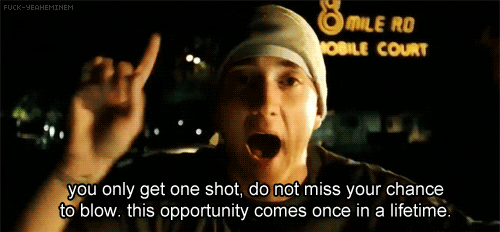
The waiting period
This is probably the hardest part of the application phase. Just after the submissions got over, my winter holidays started and I chose to pursue some of my hobbies which had been put on a (soft)hold for the past few months. I would recommend every one to take these holidays to de-stress yourself and get your attention away from the impending results.

The results
After the application submission, I was quite optimistic that I would get in at least four of the universities. Then reality set in! I got rejected by Stanford. After this first reject, I started questioning myself about whether I actually deserve to be in grad school and if I should have applied to more places. But then the lyrics of ‘Don’t You Worry Child’ by Swedish House Mafia echoed through my mind.

After the Stanford reject, a lot of my friends were getting their admits and a few of them already had more than two! And a few of them had interview calls from other universities. They were in a position to choose which university they wanted to attend and there was me just optimistically waiting for acceptances. Along with this, one of my friends introduced me to GradCafe, a site where students who have received their admits post the date they got in along with other comments regarding their profile which helped them get accepted or rejected. After that, I was checking GradCafe daily and at one point I was getting frustrated on people getting admits from the same university I applied to and had not even heard back from. The only thing GradCafe helped with was letting me know when particular universities send out the last set of admits by checking previous years data. Two weeks after the Stanford rejection, I mailed the CMU admissions department regarding the admissions decisions as they had released the results by that time for the last three years. And BAM! within an hour of sending the mail, I got two consecutive rejection from CMU, one for the MS program and one for the PhD program in Robotics. By this time, all of my friends who had applied had got in some or the other university with me being the exception. After this, I started opening up my old projects which I had put on the sidelines because of the grad school applications. I thought that if I do not get it this time, then I should at least boost up my profile by working on my ideas and learn from it. I even started emailing professors asking for research internships following the same old routine as last year.
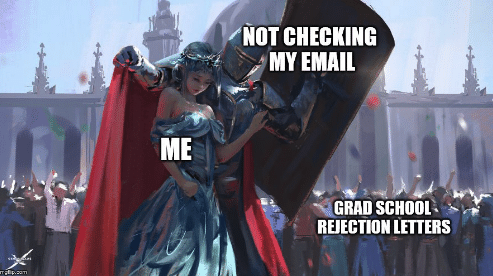
The third week of February! This was the week where MIT AeroAstro was supposed to release their decisions. So if I got a mail from them then I was in, if not then I should assume that I have been either rejected or waitlisted. This is what I got from GradCafe by checking the dates on which MIT AeroAstro usually released their admit results. So the date for getting the acceptance mail was 22nd February. I was quite nervous that day and luckily I didn’t have any classes that day. I was working on one of the projects and debugging the code and at 21:30 I got a mail from the MIT admissions administrator, which I didn’t even read completely before celebrating in euphoria. I just read the first to line and saw the word ‘delighted’ which was enough for me to start the celebration as all the previous rejection mails started with ‘We deeply regret …’ and this mail was different.
Tackling the anxiety during the waiting period
After submitting the applications, you would definitely start getting anxious about the results. And once your friends start getting those admits and you do not even hear back from any of the programs, it becomes quite scary. You start questioning your abilities, your application strength, etc. Having gone through these feelings and then getting the admit, I would advise you to not get nervous. It is highly improbable that you will get in all the universities you apply to, so rejections are inevitable. You just have to get one admit from all your n-number of applications. So you should definitely wait till all the results are out (generally 15th April).
Conclusion
The application process was on heck of a journey! From getting to know more about myself while writing my SoPs to reading a lot of papers while choosing different labs. I learned a lot and it was worth it. Hope this blog helps future applicants in not repeating the mistakes I made.
A list of other blogs and documents I found useful during my application process.
- Karthik Raghunathan’s question archive and paper on the graduate application process (focussed towards Masters programs)
- Mor Harchol-Balter’s document on PhD applications in Computer Science.
- Philip Guo’s Website containing SoPs of his students. (I recommend reading this after your draft of SoP is finished)
- An excellent blog by Katherine Lee and Ben Eysenbach on writing cover letters for residency programs.
- Blog by Tim Dettmers on the PhD application process.
- Website with many openly available SoPs.
- List of application fees Waiver.
- A fairly comprehensive compilation of advice about graduate school.

Leave a Comment